Tall perennial flowers are a great addition to any garden and can add depth and texture to the landscape. They make perfect natural borders, hedges or privacy screens, as well as serve as striking centerpieces. These flowers can also be used to camouflage unsightly objects in the yard or garden such as fences or the neighbor’s backyard. This collection of tall perennials all reach above 5-feet when in bloom, and can be utilized for layering in the flower garden, or to define edges and borders. Elevate your flower garden with these stunning tall perennials, which include Torch Lilies/Poker Plants (Kniphofia), False Aster (Boltonia asteroides), Sweet-Scented Joe Pye Weed (Eutrochium purpureum), Goat’s Beard (Aruncus dioicus), Ironweed (Vernonia sp.), Compass Plant (Silphium laciniatum), Bush Clover (Lespedeza sp.), Ashy Sunflower (Helianthus mollis), Coneflowers (Rudbeckia sp.), Hardy Hibiscus (Hibiscus moscheutos), Blazing Star (Liatris pycnostachya), American Beautyberry (Callicarpa americana), Hardy Willow-Leaved Jessamine (Cestrum parqui), and White Ginger Lily (Hedychium coronarium).
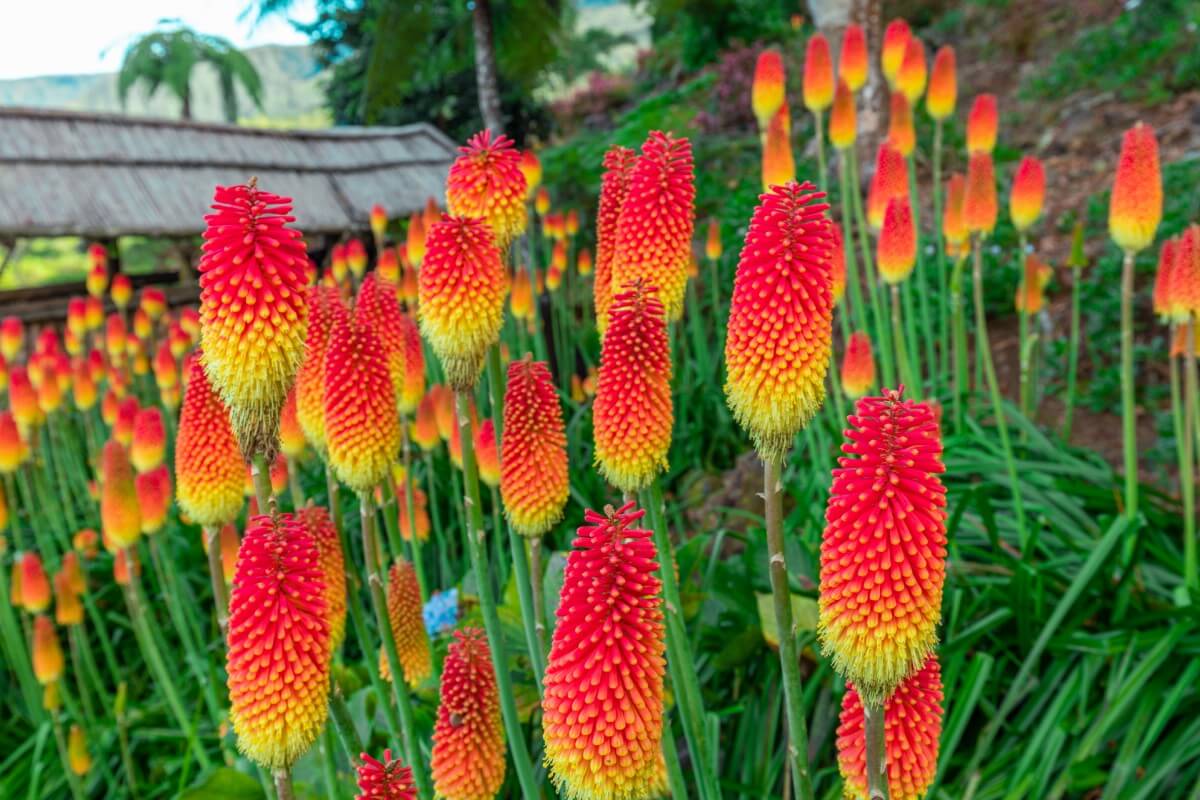
The Torch Lily, also known as Poker Plant, is a bold and vibrant perennial that grows on stalks up to 6 feet tall. Its height and unique flower arrangement make it a real showstopper. The brightly colored flowers are displayed on top of the tall spikes, resembling colorful torches or glowing hot pokers. As they grow, the flowers change color, resulting in a captivating bicolor composition. One of the most attractive features of this tall perennial is that nothing obstructs the blooms from view, allowing them to shine without restraint. Torch Lilies come in a variety of cultivars, with some of our favorites being “Nobilis” (orange/red), “Percy’s Pride” (yellow/green), and “Bees’ Sunset” (orange/yellow). These plants are hardy to zones 5-9. Another great perennial to consider is the False Aster (Boltonia asteroides).
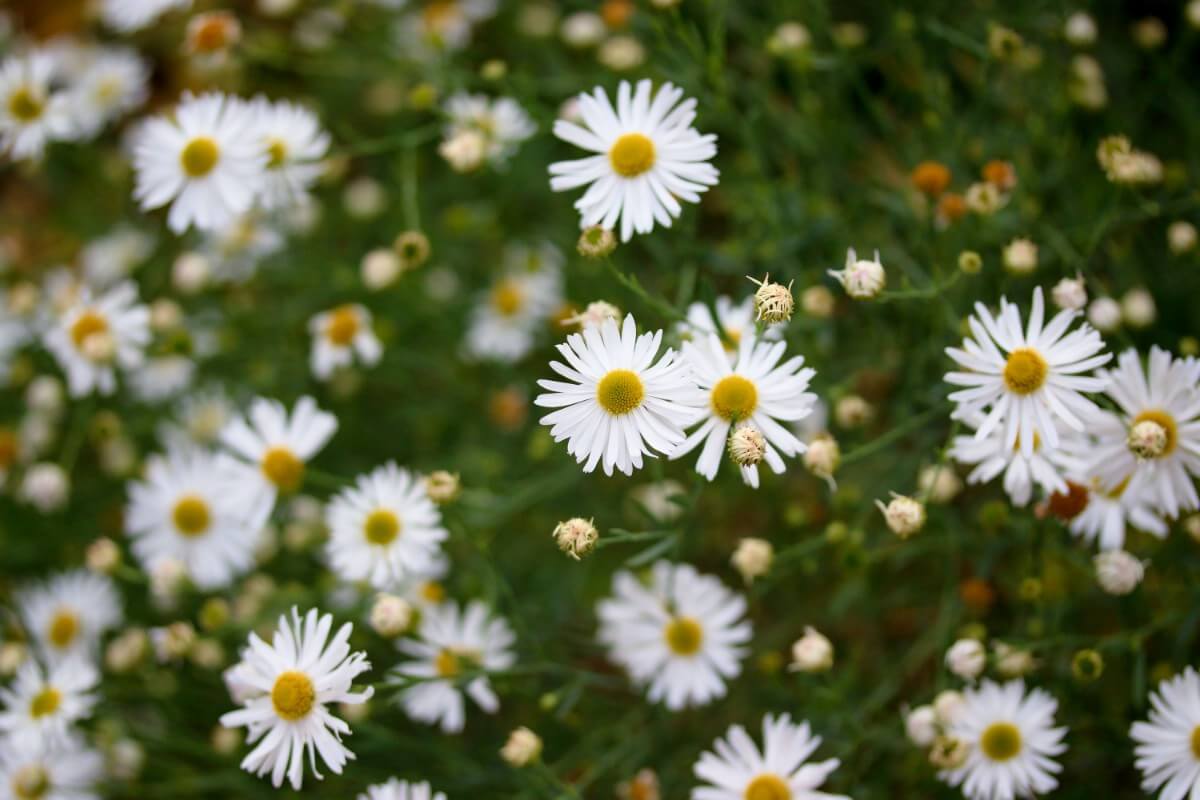
The False Aster is a fantastic choice for those looking to attract bees and pollinators in the late season. With its sweet white daisy-like flowers, this plant is a late bloomer that can reach up to six feet tall. The False Aster is a native plant that is adored by butterflies, bees, and other pollinators as it provides a vibrant array of colorful flowers in pink, purple, blue, and white. This plant is hardy to zones 3-10 and is an important food source for bees and pollinators. Another great option for attracting pollinators is the Sweet-Scented Joe Pye Weed (Eutrochium purpureum).
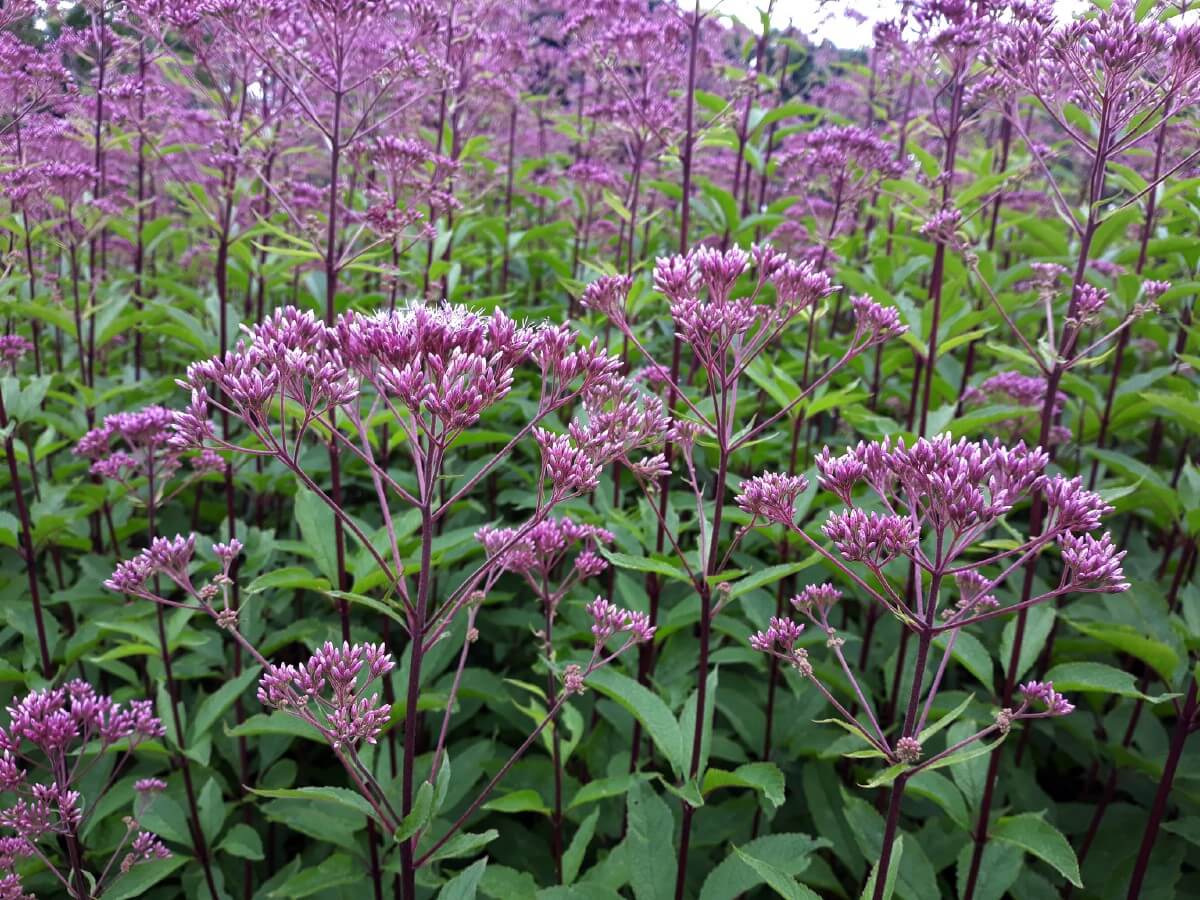
The Joe Pye Weed, which grows up to 7 feet tall, is a wonderful native perennial loved by pollinators due to its sweet vanilla scent. Despite its unfortunate name, this plant has lance-shaped foliage that complements its beautiful clusters of tiny pinkish-purple flowers. When in bloom, it attracts butterflies and bees with its giant domed groupings of flowers. This makes it an excellent choice for pollinator gardens or as a border plant. The Spotted Joe Pye Weed is another native species that is just as impressive as the Sweet-Scented type. It stands out with its deep purple-colored stems but lacks the vanilla scent of its counterpart. Both species make great background perennials or border plants for smaller mounding plants and flowers. Hardy to zones 3-9. Another noteworthy plant is the Goat’s Beard (Aruncus dioicus).
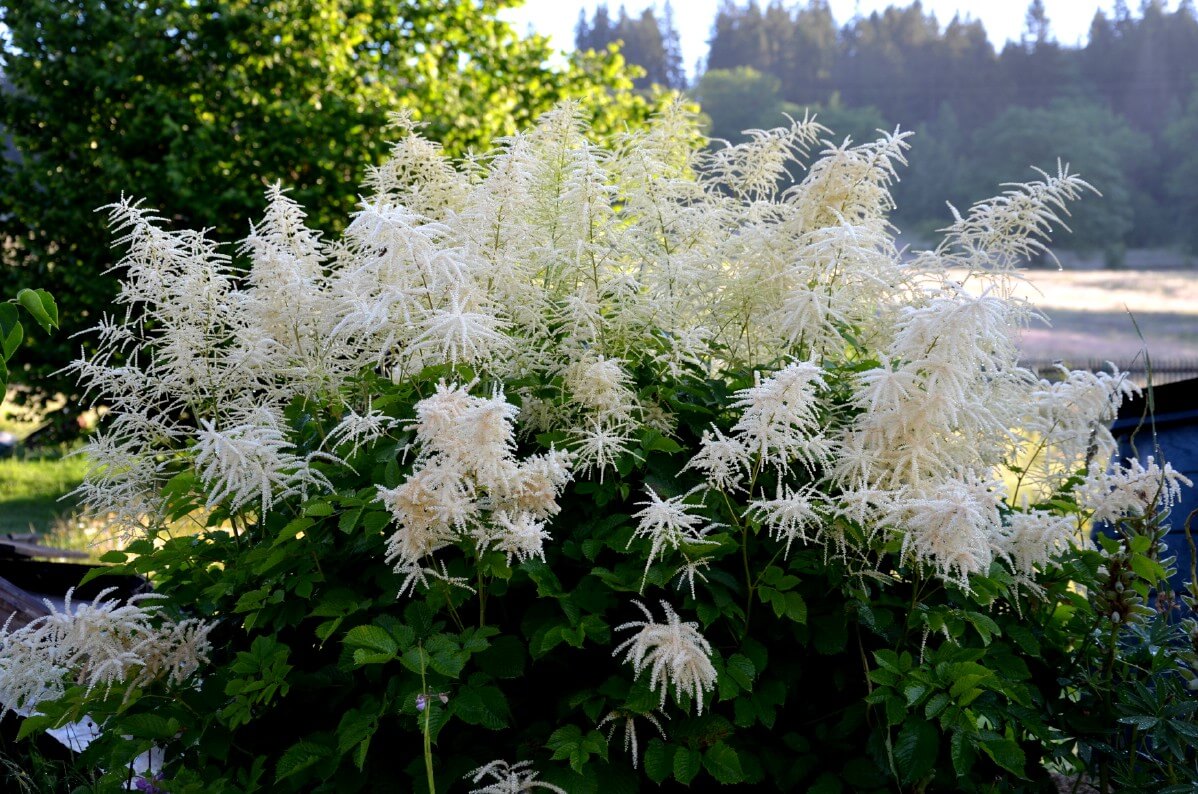
Ensure you have enough space in your garden for this impressive, tall plant. Goat’s Beard is a bushy perennial that can reach up to 6ft in height when fully matured, making it an eye-catching centerpiece or background plant. The fern-like foliage and feathery plumes of tiny white star-shaped flowers make for a stunning display. The flower stalks are so heavily covered in blooms that they resemble fur or a cake smothered in rich icing. Since Goat’s Beard spreads out significantly, you need to ensure you have ample space before planting it. This stunning plant is the host plant for the Dusky Azure butterfly and attracts many other types of butterflies and bees as well. It can withstand harsh weather conditions from zones 3-9. Another beautiful plant you can consider is Ironweed (Vernonia sp.).
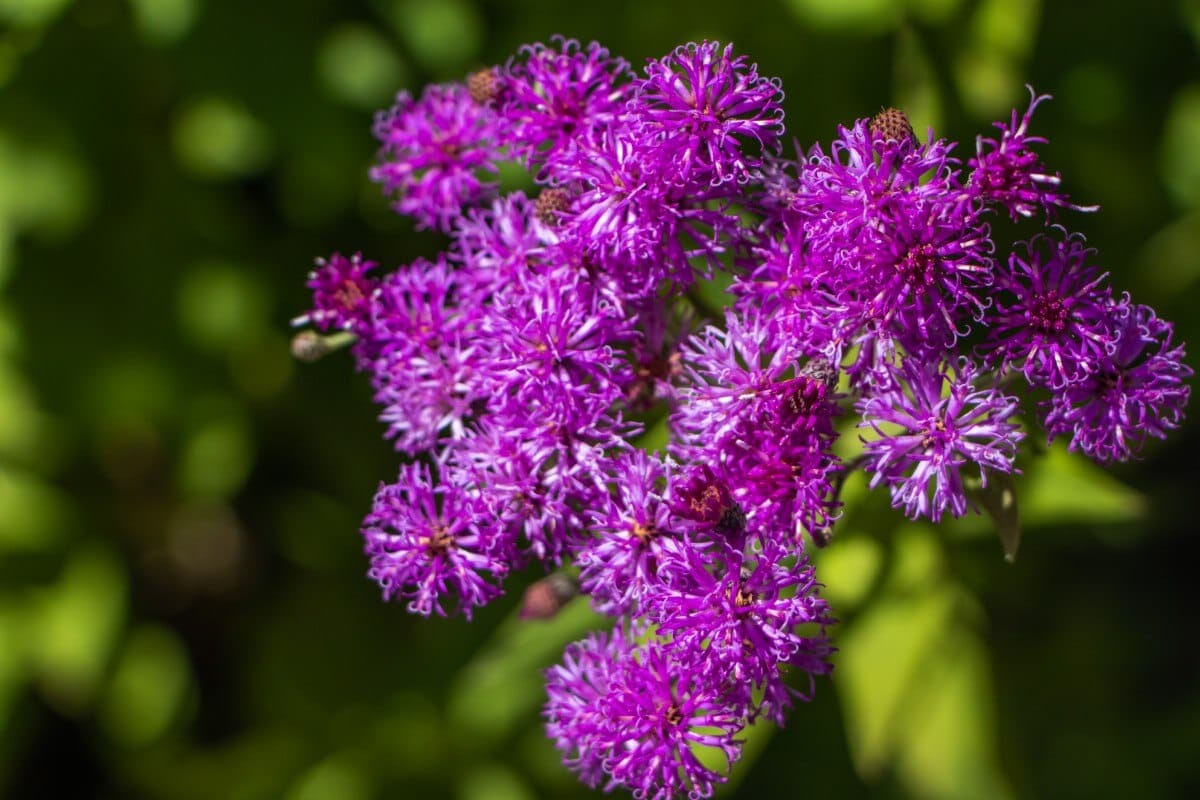
Ironweed is a native perennial that can grow up to 5 feet tall, blooming in late summer and early fall. It is an important source of food for late-arriving butterflies and attracts bees and butterflies with its vivid purple flowers. The flower heads are large, flat clusters of many little blooms that grow atop tall singular stalks with minimal green foliage. Ironweed is a great addition to native or wildflower gardens, and there are many species of Ironwood plant to choose from depending on your location. Some examples include Western Ironweed, Prairie Ironweed, and Tall Ironweed. All of them feature clusters of gorgeous purple blooms and are loved by pollinators. Ironweed is hardy to zones 5-9.
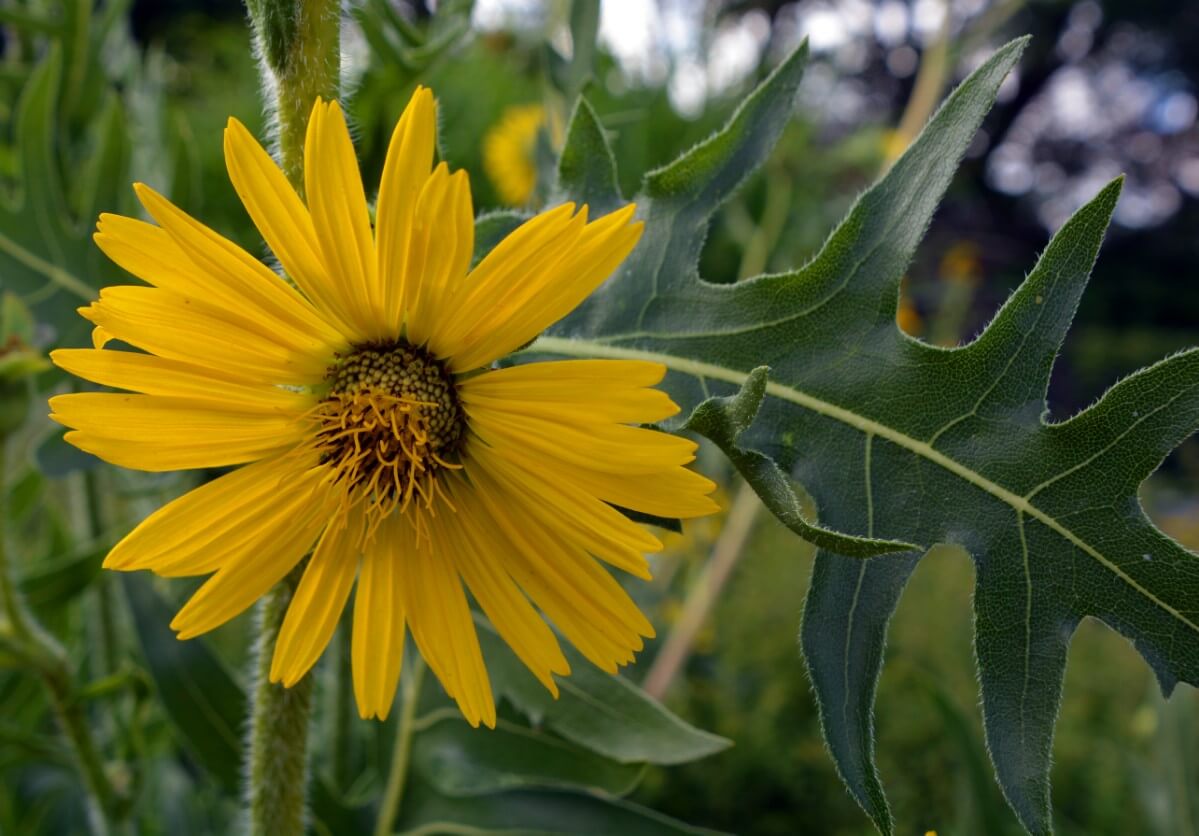
The Compass Plant is an excellent choice for those seeking privacy or a beautiful backdrop for their garden. Resembling sunflowers, this tall plant boasts several yellow blooms that grow in staggered formation up its hardy green stem. Its impressive height of up to 9 feet makes it perfect for planting along a fence or wall, or to block an unpleasant view. The Compass Plant’s bright yellow flowers are adored by birds and butterflies, making it an ideal addition to any wildflower or butterfly garden. It also serves as a stunning backdrop for vegetable gardens or pathways. This native perennial flower can be grown in zones 5-9. Another great plant for your garden is the Lespedeza sp., or Bush Clover.
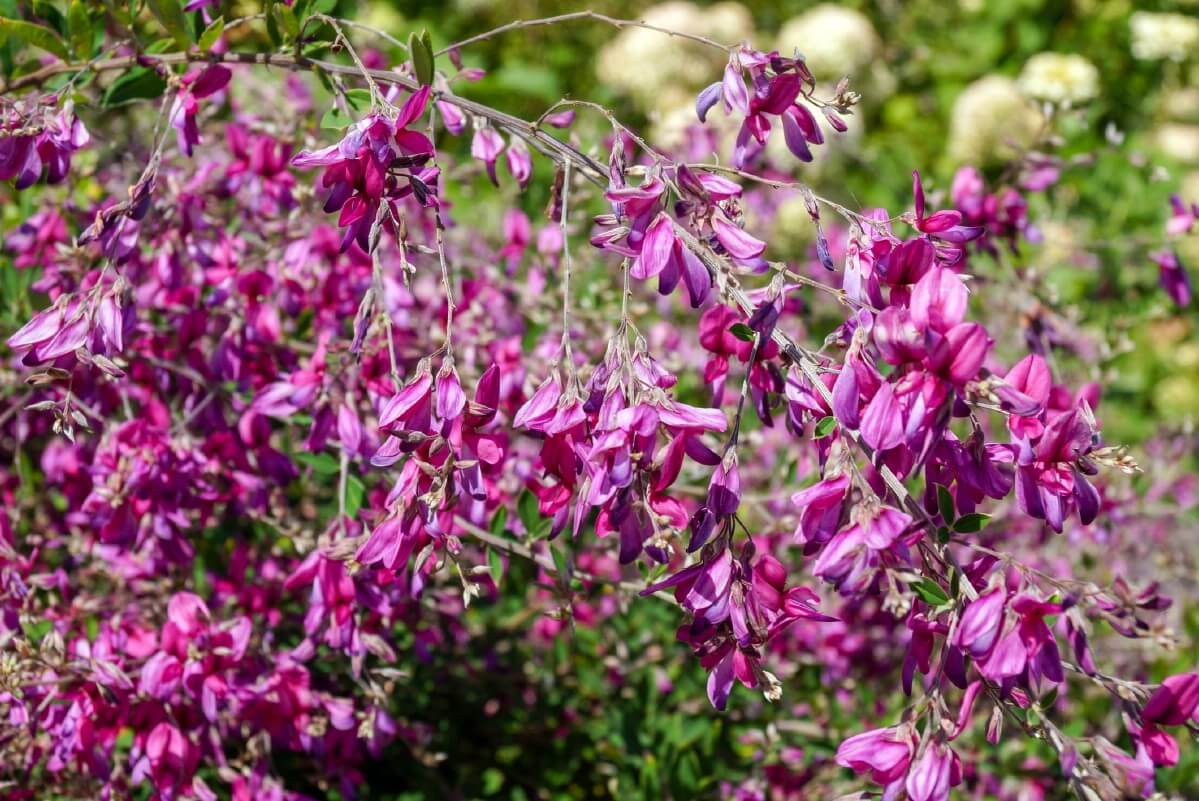
Bush Clover is a plant that is highly beneficial for bees of various kinds. This perennial shrub is not commonly used, but it is an attractive plant that provides vital nourishment to birds, butterflies, and bees. This species of plant comes in different types, and the Asian varieties, such as Lespedeza thunbergii, are the most popularly grown and known. However, the North American species of Bush Clover are equally stunning and should be prioritized in landscaping if possible. Some of the North American species include Lespedeza capitata, which grows white flowers with a purple center, and Lespedeza virginica, which blooms light pink flowers. Bush Clover is a sturdy plant that can grow up to 2-5 feet tall and can thrive in less than ideal soil. Both long and short-tongued bees enjoy these flowers. Bush Clover is hardy and can survive in zones 3-9. Another plant that is beneficial to bees is the Ashy Sunflower (Helianthus mollis).
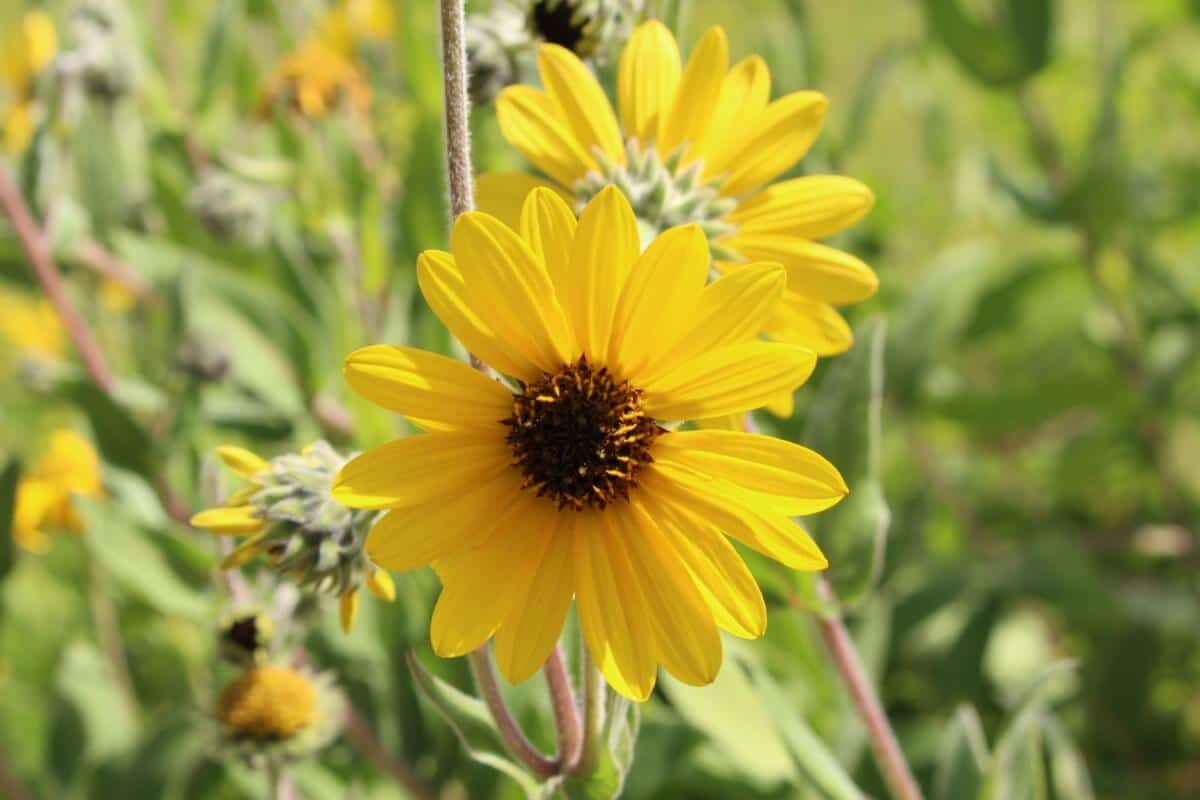
The Ashy Sunflower is a unique perennial sunflower that stands out among its annual counterparts. Its height and longevity make it an excellent addition to any landscape, bringing a bright burst of yellow to your garden every summer. Unlike common sunflowers that need to be replanted each year, the Ashy Sunflower will return year after year, blooming from early summer through autumn. This low-maintenance native perennial attracts butterflies, bees, and birds, especially those looking to feast on its seedheads. It is hardy in zones 4-9. If you’re looking for other tall perennial sunflowers to add to your garden, consider the Tall Swamp Sunflower, Swamp Sunflower, Western Sunflower, Sawtooth Sunflower, Ten-Petaled Sunflower, Maximilian Sunflower, and Nuttall’s Sunflower. Additionally, you might want to add some coneflowers (Rudbeckia sp.) to your garden for added color and variety.
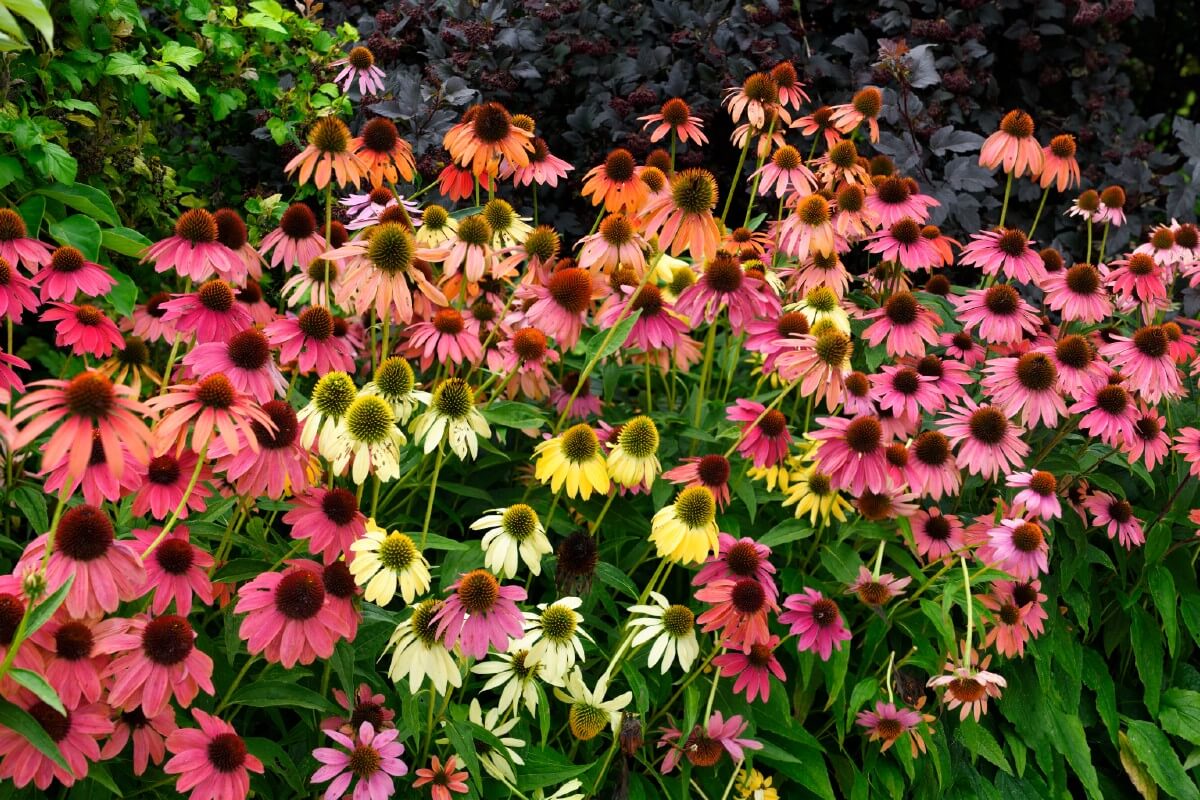
Coneflowers come in various heights, ranging from 3 to 9 feet tall, making them a great addition to any garden. They are available in many different varieties, all of which are beautiful and add elegance to your garden. The Tall Coneflower (R.grandiflora) is especially stunning with its bright-yellow blooms that sit atop stems that can reach up to 5 feet tall. Its flowers are similar to sunflowers, with a prominent brown cone center. It’s hard not to feel happy when you see these flowers, and pollinators like bees and butterflies love them too! Another Coneflower variety is the Sweet Coneflower (R.subtomentosa), which can grow up to 6 feet tall. Its flowers are a lighter, buttery yellow color. Cutleaf Coneflower (R.laciniata) is one of the tallest types, often growing up to 9 feet tall. Its golden yellow flowers droop around the center cone, creating a sunbathing effect. Lastly, the Western Coneflower (R.occidentalis) is unique because it doesn’t produce the traditional brightly colored blooms we are used to seeing. Instead, it grows a tall purplish-brown cone, with a ring of tiny yellow flowers around the base. Despite its unconventional appearance, it adds variety and interest to any garden. These native perennial flowers also help skyrocket pollinator populations, making them a great choice for a natural or wildflower garden. They are hardy to zones 3-10, depending on the species. A Hardy Hibiscus (Hibiscus moscheutos) is another great option to consider.

The Hardy Hibiscus is a unique variety that can thrive in zones as low as zone 5, unlike any other Hibiscus species. Its impressive size ranging from 4 to 7 feet and stunningly colored flowers with contrasting center colors make it a magnificent addition to gardens in northern regions of the country, giving off tropical vibes. The large dinner-plate-sized blooms last for only a few days, but new ones bloom continuously for months on end, attracting hummingbirds, bees, and butterflies. An added bonus is that the Hardy Hibiscus serves as a host plant for twenty-eight butterfly and moth species. With a variety of color options, including “Brandy Punch,” “Mocha Moon,” “Jazzberry Jam,” and “Summer Storm,” this Hibiscus is a must-have. It is hardy to zones 5-9. Another beautiful plant, the Blazing Star (Liatris pycnostachya), is also worth noting.
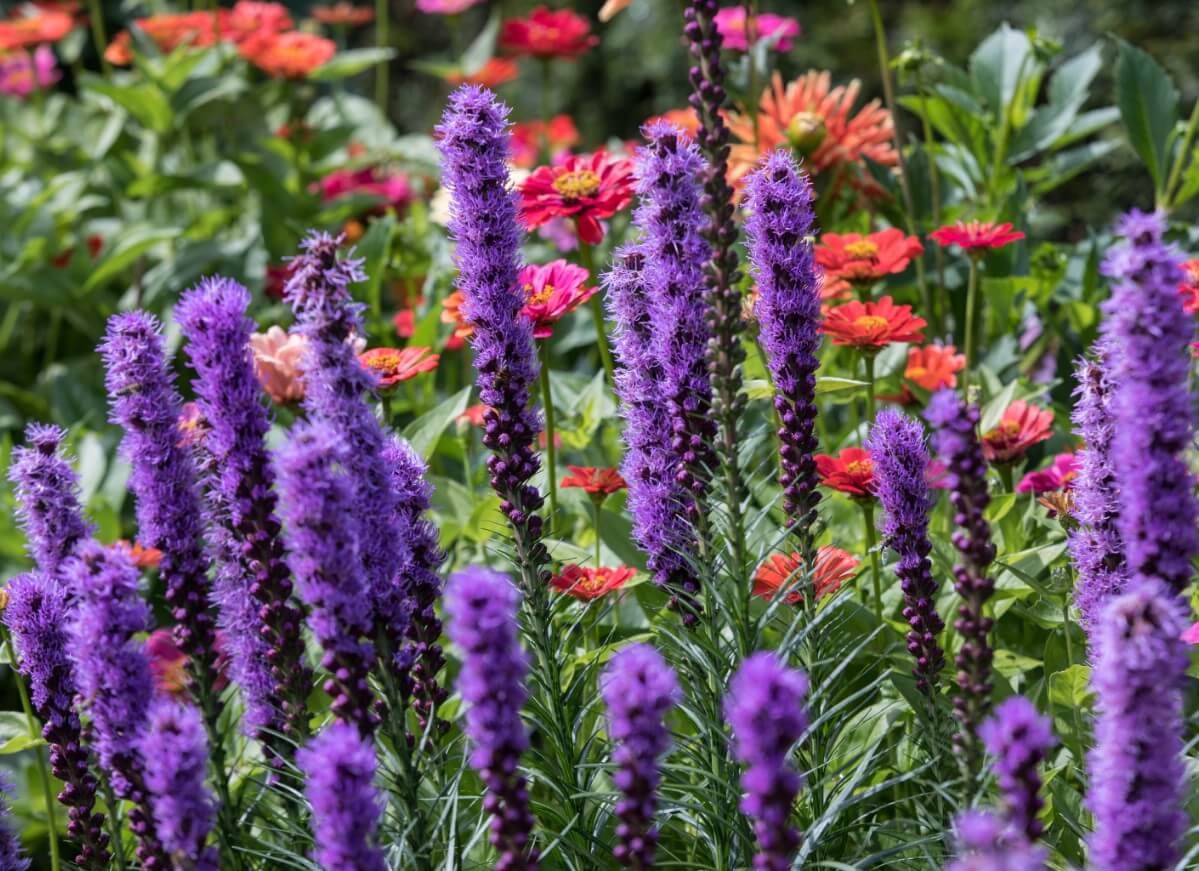
Blazing Star (Liatris) is a remarkable plant that doesn’t require much maintenance and grows effortlessly, attracting hummingbirds and pollinators. To make a statement in your garden, along the fence line, or down the walkway, add this tall purple flower to your collection and enjoy its boldness. Its vibrant purple flowers bloom on 4-5 foot stems high above the delicate green foliage, appearing fluffy and dense. When in full bloom, Blazing Star looks like massive stalks of purple rising up from the garden bed. The enormous display of flowers is appreciated by hummingbirds, butterflies, and bees alike. Liatris is easy to grow and requires minimal attention, making it perfect for zones 3-9. Another great plant to consider is American Beautyberry (Callicarpa americana).
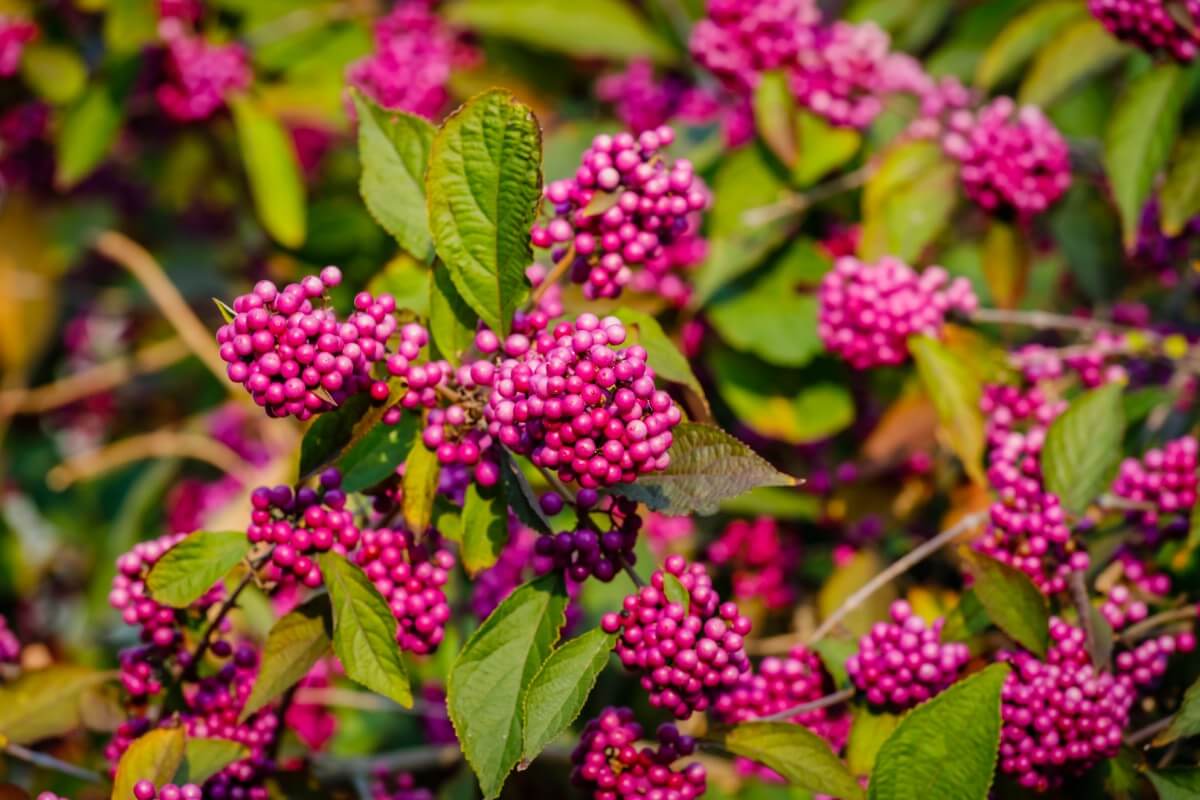
The American Beautyberry is an eye-catching plant that produces stunning purple berries, which serve as an excellent source of food for birds during late fall and winter. More than just a pretty sight, this plant is worth growing for its bright appeal and the joy it brings to our feathered friends. Its berries usually bloom in autumn and can last well into the winter months, providing valuable nourishment to wildlife. Although the plant’s flowers are small and unobtrusive, they are still lovely and add to the overall aesthetic. The berries, however, are the main attraction, growing in dense clusters of brilliant purple, which wrap around the stem. When most plants are withering and turning brown in color, the American Beautyberry provides a vibrant pop of color to the landscape. This native shrub typically grows between 4-6 feet tall and is suitable for planting in zones 6-10. Another hardy plant worth considering is the Willow-Leaved Jessamine, also known as Cestrum parqui.
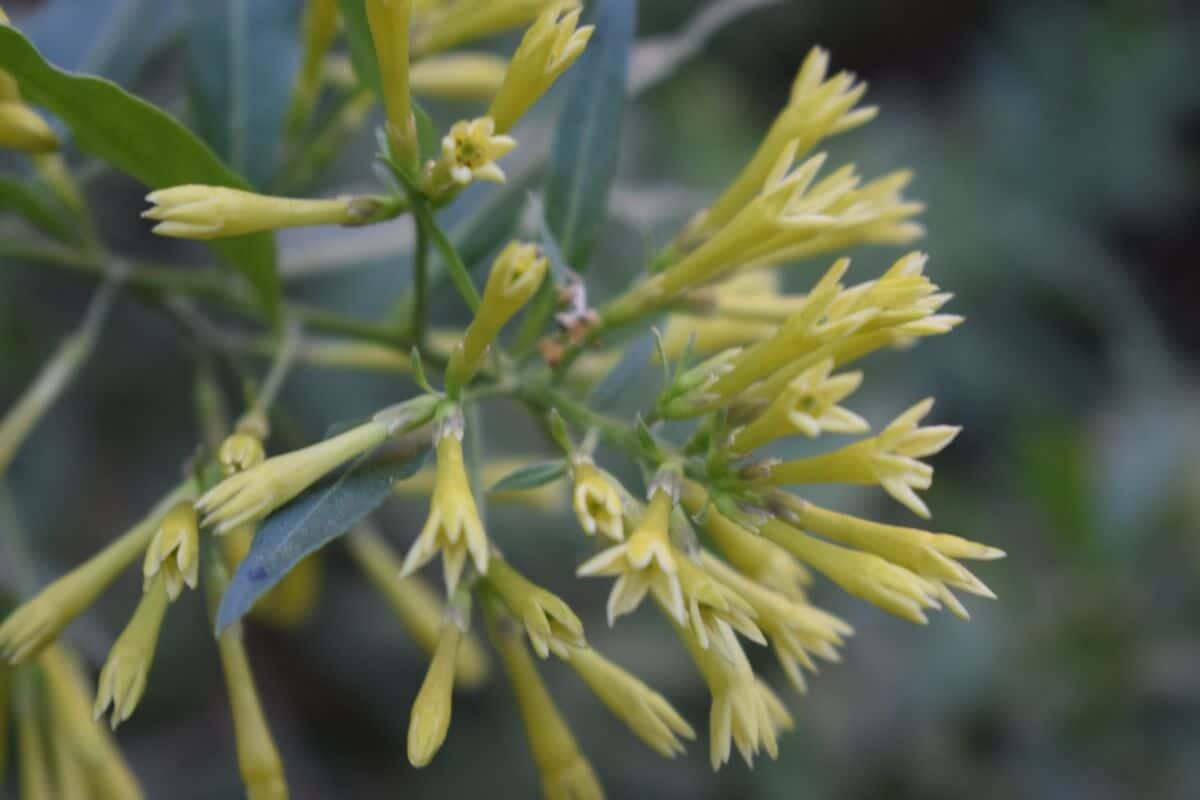
To add some intoxicating fragrance to your garden or landscape, consider planting the Willow-Leaved Jessamine. This plant grows up to 5-6 feet tall in temperate climates and even taller in tropical ones. Its flowers grow so densely that it looks like the bush is smothered with them, and they emit an alluring scent that’s sweet like almonds. Hummingbirds are drawn to the deep yellow flowers, making it a great addition to any bird-friendly garden. Plant it in a sunny location near your porch or deck, so you can enjoy its aroma and watch the hummingbirds feed. Don’t worry if you live in zones 9-11; the Night-blooming Jessamine (C.nocturnum) is also a fragrant option. Another fragrant choice is the White Ginger Lily (Hedychium coronarium).
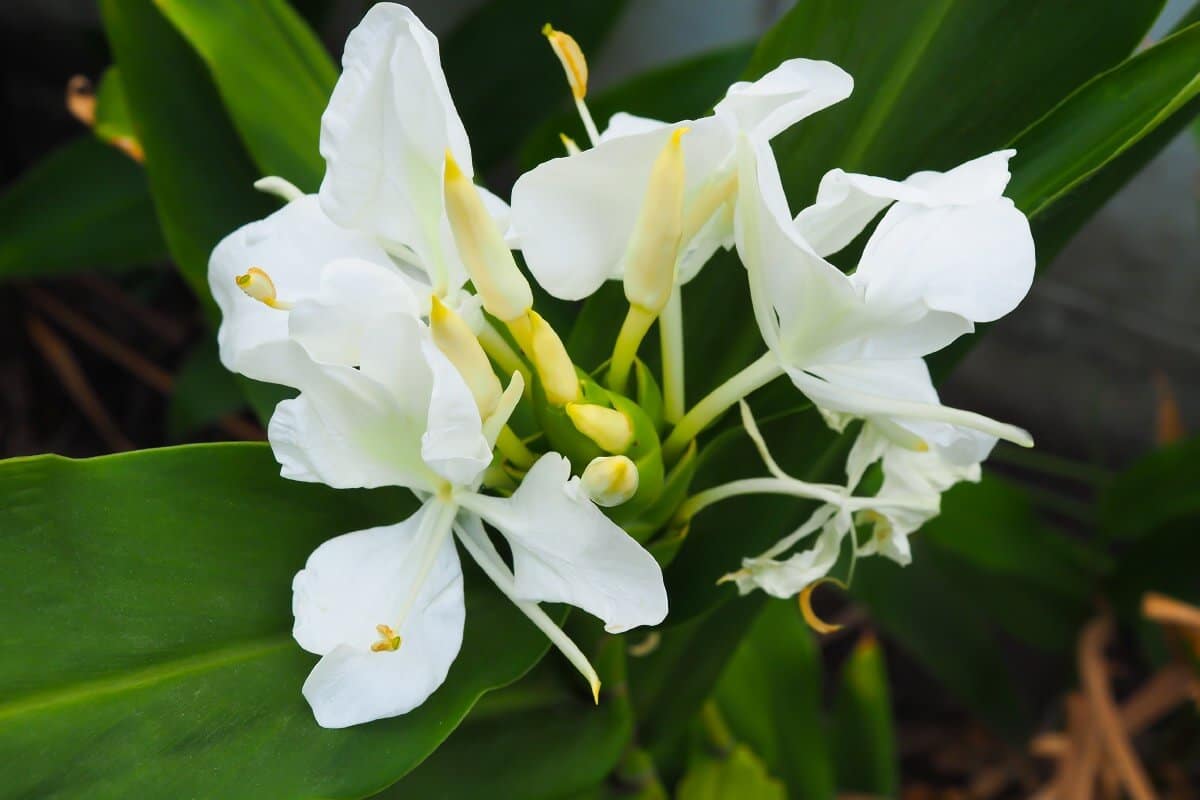
The White Ginger Lily is a great addition to perennial gardens in zones 7 through 11 as it brings a tropical vibe. Not only does it have a fantastic scent, but its towering height is also alluring. The flowers of the White Ginger Lily bloom on long stems, which can grow up to 4-6 feet and are densely packed above the green foliage. Although each flower lasts only one day, they appear in abundance, making it challenging to notice their brief life span. These blooms are not only fragrant; they are also stunningly beautiful, resembling dancing white butterflies on the stems, giving off an exotic feel. It can survive in zones 7-11.
Picking the right tall garden perennials can be tricky since there are so many options available. When choosing, consider the space you have. Will it stand at the back or be the centerpiece? Also, think about how the flowers will add variation, height, and intrigue to your garden setting. With so many varieties available, planting flowers can be an exciting experience, which allows us to bring our unique ideas to life.





